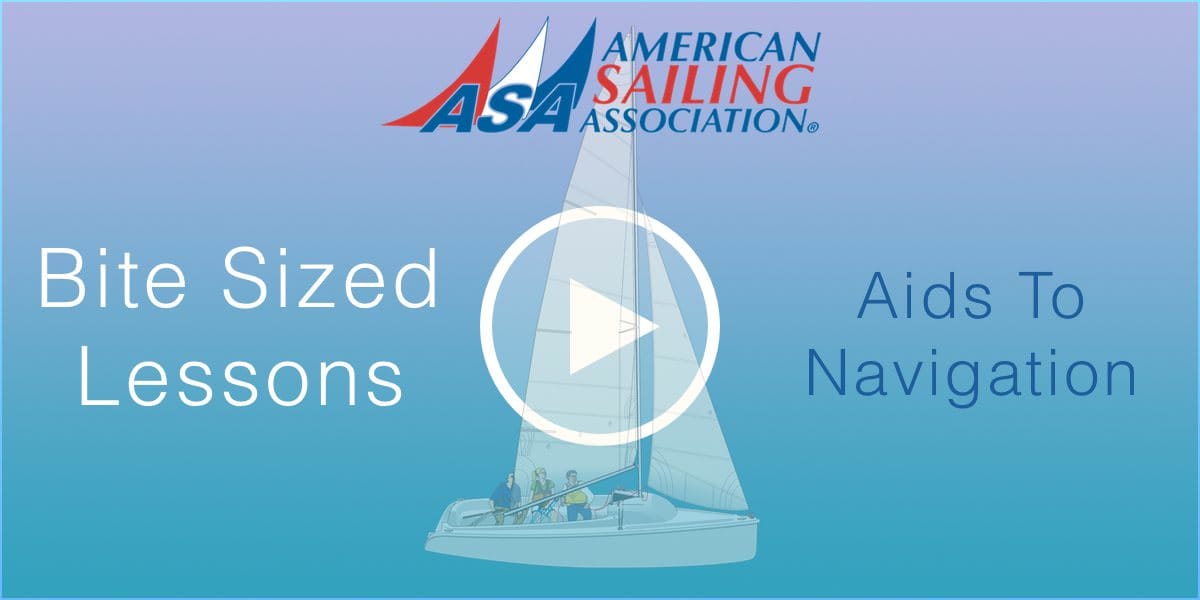We know that learning to sail can be overwhelming and there is a lot to take in. In an effort to help we’ve created a series of “Bite Sized Lessons” taken straight out of our textbooks – Sailing Made Easy and Coastal Cruising Made Easy.
In this lesson we take a look at aids to navigation. We explain the basic rules and talk about their colors, shapes and numbers.
Watch More Bite Sized Lessons ⟩⟩
On the water there are no roads so we depend on buoys to indicate where it is safe to travel. These buoys are both color coded and number coded and can be referenced on a nautical chart. There is a lot more to it but let’s just take a quick look at colors, shapes and numbers. In North America red marks indicate the right hand side of the channel when you are returning from the sea or moving from a large body of water to a smaller body of water. The phrase “red right returning” will help you remember the system. Green marks indicate the left hand side of the channel when you are returning from the sea. Fixed marks and unlighted buoys on the edge of a channel have characteristic shapes. Fixed red day marks are triangular apex upward. Unlighted red buoys are cylinder shaped, tapering at the top, hence the name “nun” buoys. Unlighted green buoys are shaped like a can and are called “can” buoys. Red and Green lighted buoys are not necessarily differentiated by shape. Each channel mark has it’s own number starting with mark 1 or 2 at the beginning of the channel when entering from the sea or a larger body of water. Odd numbers identify the green, or left hand side of the channel. Even numbers identify the red side. Navigating a marked channel is as simple as knowing which side of the marks you should be on and staying in the deep water channel.












